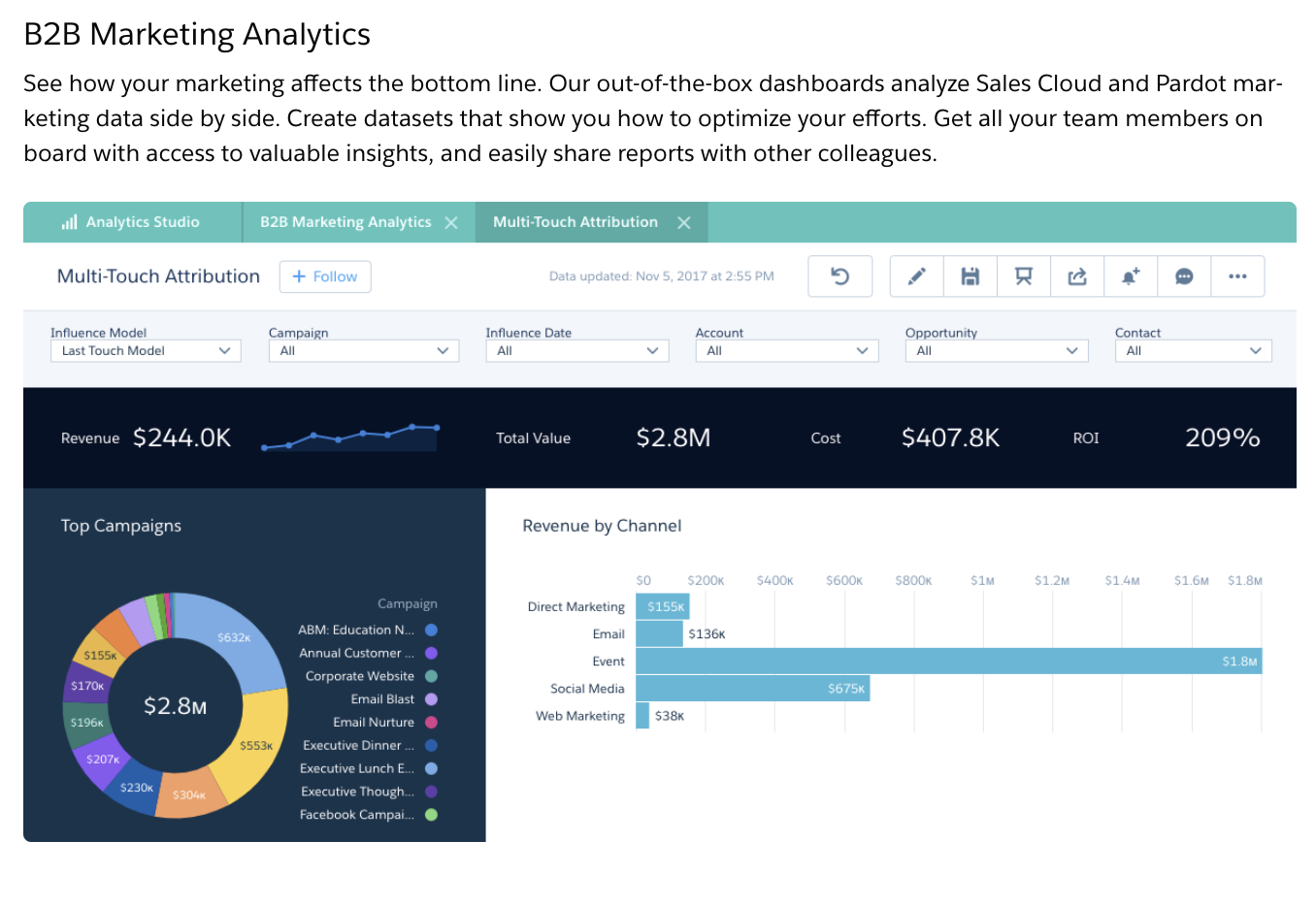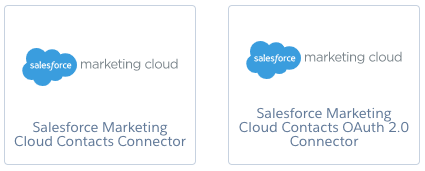Blog
10/08/2020
Completing the Funnel-View: Enriching your Salesforce Data with Marketing Insights
8 minute read
Many organizations struggle with establishing a common view between marketing and other business processes such as sales. Some of the root causes of this problem are the disconnect between systems and the difficulty to reliably make conclusions on data that is disconnected. At best, these conclusions are often assumptions based on gut feeling.
Those familiar with the Salesforce ecosystem are aware that Salesforce Einstein Marketing Analytics includes a robust toolkit for analysing your Salesforce data that goes well beyond the standard reports and dashboards functionality. What many of us are not aware of is that Einstein Analytics gives you the possibility to analyse much more than your day-to-day Sales or Service data from your Salesforce instance. By using Analytics Templates and Connectors, you can leverage the data you have collected in your marketing automation solution, such as Salesforce Pardot or Marketing Cloud, to add marketing data to your analysis. To gain even better insights, you can utilise Google BigQuery or Google Analytics connectors to leverage web behaviour data and connect that to your Sales/Service- and Marketing Data to complete the view.
Accelerate with Analytics Templates
Analytics Templates allow you to jump right into the world of Einstein Marketing Analytics and get a better understanding of your business. With the templates, you can often get insights from the prebuilt datasets and dashboards without doing any customisations, which saves both time and resources. Salesforce offers Analytics Templates for Sales Analytics, Service Analytics, and B2B Marketing Analytics. The Analytics Templates also form a solid fundament to build further upon, so you could also leverage the experience from consultants like Fluido and the insights of your users. There’s a lot more potential in the templates to provide more and better insights based on your specific needs to support your decision-making.
The B2B Marketing Analytics template works with Salesforce Pardot data. A Dataflow, datasets, and up to 6 dashboards are automatically created from the template. Dashboards that are normally included in the template are Pipeline, Engagement, Marketing Manager, Account-Based Marketing, Multi-Touch Attribution, and Einstein Behavior Scoring Dashboard.
–> Learn more: Gain rapid insight into your business with Salesforce Einstein Analytics Apps

Figure 1. B2B Marketing Analytics App
The picture below shows the Marketing Pipeline from Pardot and Sales Cloud. The chart tells you how many visitors you had in total on pages where the Pardot tracking code is set up and how many of those visitors have ended up as Closed Won Opportunities. This chart could be found in the Pipeline Dashboard — and overall, the dashboards in the B2B Marketing Analytics template give you a good picture of what’s happening with your marketing with Pardot, how cost-efficient it is, and how it affects your sales.

Figure 2. Marketing Pipeline
Leveraging Einstein Marketing Analytics with Marketing Cloud
If you are using Marketing Cloud, you can utilise the Salesforce Marketing Cloud Connector to bring relevant data from Marketing Cloud to Einstein Analytics. When utilising Marketing Cloud data, you first need to configure Marketing Cloud so that Einstein Analytics can connect to it. After that, you choose what data you want to bring to Einstein Analytics. Once the data is available in Einstein Analytics as a connected Data Source, you can use the Dataflow or Data Prep to connect the data with other data, perform calculations, slice and dice the data, and so on. Once you have created the datasets, you are free to utilise all the data you have in Einstein Analytics to build interactive dashboards with actionable insights.

Figure 3. Salesforce Marketing Cloud Connectors
Connecting your website with Einstein Marketing Analytics
To gain even more insights from your customers, you can utilise website behaviour data by connecting Einstein Analytics to Google Analytics or Google BigQuery using the corresponding Connectors. This gives you valuable information on how your website or eCommerce application is contributing to your marketing and sales funnel. To connect your Google data with Einstein Analytics, the same process as with the Marketing Cloud data applies: you first need to configure the Connector and then select the data you want to bring to Einstein Analytics as a connected data source. After that, you are free to utilise the data however you want, connect it to your Salesforce/Pardot/Marketing Cloud data, or connect it with your 3rd party data.

Figure 4. Google BigQuery and Google Analytics connectors
Once the datasets are created, only your imagination is the limit as to what type of visualisations could be built. The picture below shows one example of a visualisation that could be accomplished with the data you have in Einstein Analytics. Naturally, you would want to build filters, toggles, and other logic for the dashboard. Additional charts and detail tables would allow you to drill down to row-level data to get the best possible insights. In the end, you should have some nice visualisations which would tell you what happens with your website performance in relation to your marketing, sales, or service data — moreover, you could always drill down even further to a single Account- or Contact level.

Figure 5. Customer lifecycle from website behaviour to Closed Won Opportunity.
The description above provides a simplified overview of the process of combining data from multiple sources and creating visualisations. Setting up the template Apps is a very quick way to get started with Analytics. The use of Einstein Analytics Connectors is a relatively rapid way of enriching your Salesforce data with Marketing Cloud data or other 3rd party data, and the reason for getting more and more data to Einstein Marketing Analytics is to come closer to a 360-degree view of the customer. The more data you have, the better visualisations you can build and the more insights you could get — and better insights will lead to even better decisions.
–>Learn more: Creating Value with Intelligent and Data-driven Marketing Automation

Janne Warpenius
Analytics Practice Lead
Read next
22/12/2020
Holiday Greetings from Fluido
5 minute read
